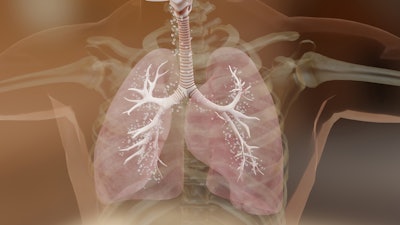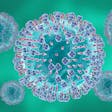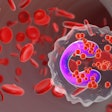
Damage control may be the secret to finding new treatments for asthma. In a new study released by King’s College London, researchers discovered that preventing epithelial cell death in the lungs could reduce or eliminate an asthma attack. Their study was recently published in Science.
Epithelial cell death causes the lungs’ airways to become overcrowded, which leads to inflammation and mucus secretion — the hallmarks of an asthma attack. Unfortunately, most current asthma treatments target the inflammation. However, the process of epithelial cell death (cell extrusion) could prevent the damage, inflammation and mucus. This would allow the thin lining of the lungs to remain in place and boost its infection-fighting ability.
“Our discovery is the culmination of more than 10 years of work,” said Jody Rosenblatt, PhD, a professor of cell biology at Kings College London School of Basic & Medical Biosciences. “As cell biologists who watch processes, we could see that the physical constriction of an asthma attack causes widespread destruction of the airway barrier. Without this barrier, asthma sufferers are far more likely to get long-term inflammation, wound healing and infections that cause more attacks. By understanding this fundamental mechanism, we are now in a better position to prevent all these events.”
Current asthma treatments target the consequences of an asthma attack by opening the airways, reducing inflammation and breaking up the sticky mucus which clogs the airway. In the study, researchers used mouse lung models, human airway tissue and data from previous studies of the chemical compound gadolinium, which can block cell extrusion. Gadolinium is used to improve the clarity of magnetic resonance imaging (MRI) scans. However, gadolinium has not been tested in humans as a method of preventing epithelial cell death.
“In the last decade, there has been tremendous progress in therapies for asthma particularly directed towards airway inflammation. However, there remains ongoing symptoms and attacks in many people with asthma,” said Chris Brightling, PhD, FMedSci, a clinical professor of respiratory medicine at the University of Leicester in England, and one of the study’s co-authors. “This study identifies a new process known as epithelial extrusion whereby damage to the lining of the airway occurs because of mechanical constriction and can drive many of the key features of asthma. Better understanding of this process is likely to lead to new therapies for asthma.”
Not only does the study offer hope for improved asthma treatments, it provides a better understanding of cell extrusion involved in other inflammatory diseases that feature constriction, including cramping of the gut and inflammatory bowel disease.
The research was funded by London-based charitable foundation, Wellcome, the American Asthma Foundation and Howard Hughes Medical Institute in collaboration with the University of Leicester.























